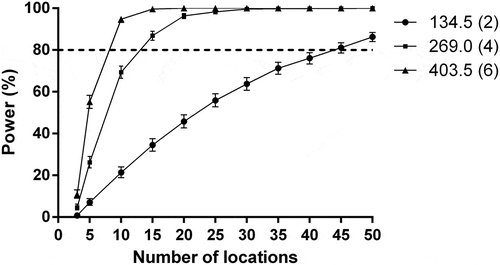Figures & data
Fig. 1 Development of Septoria brown spot of soybean in three locations in Illinois. Five treatments were applied: NIC means not-inoculated control; 0X is no fungicide application; 3X means three applications of chlorothalonil; 6X means six applications of chlorothalonil; 9X means nine applications of chlorothalonil. The per cent of four disease components (y-axes) were evaluated through the season. Bars are the standard error
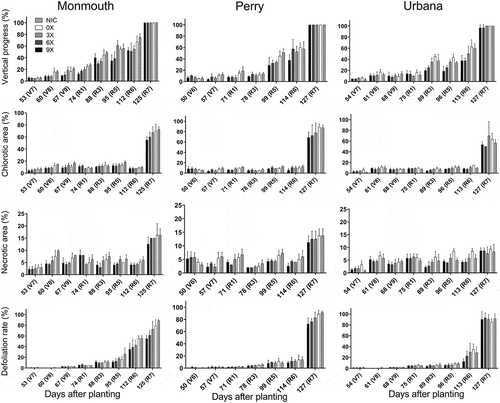
Fig. 2 Mean values of vertical progress at R6 and chlorotic area at R7 caused by Septoria brown spot of soybean with five treatments and three locations in Illinois. Error bars are standard errors. Bars with the same letters indicate no significant difference according to Fisher’s Least Significant Difference (LSD) pairwise comparisons (P < 0.05)
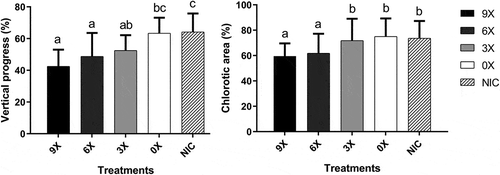
Table 1. Analysis of variance for the effect of fungicide treatments on multiple components of the severity of Septoria brown spot of soybean at the end of the season and their AUDPC values in Illinois
Table 2. Variance components for the response of Septoria brown spot of soybean to fungicide application, for disease and yield components evaluated at three locations in Illinois
Table 3. Pearson correlation coefficients (top) and p-values (bottom) for selected components of Septoria brown spot of soybean, 100-seed weight, yield, and yield response for combined data from three locations in Illinois
Fig. 3 Linear relationships between two components of Septoria brown spot of soybean severity and yield. (a) Per cent of vertical progress at R6. (b) AUDPC (V7 to R6) of vertical progress. Trials were held at three locations in Illinois
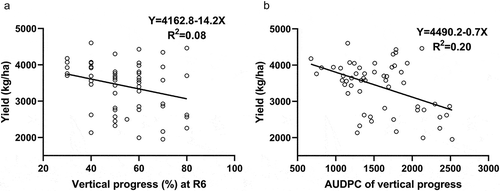
Fig. 4 Mean yield (kg ha−1) of soybean field trials inoculated with Septoria glycines and treated with fungicide sprays 9 times (9X), 6 times (6X) and 3 times (3X), or not-sprayed (0X) or not-inoculated control (NIC), at three locations in Illinois. Bars show the standard error. There were no significant differences between treatments (α = 0.05)
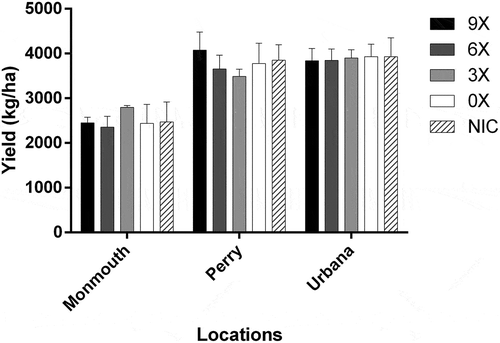
Fig. 5 Power curves simulated based on our data for the required number of locations to detect statistically significant yield response (80% power) for treatment differences (effect) of 134.5 (2), 269.0 (4) and 403.5 (6) kg ha−1 (bu ac−1), in experiments with soybean inoculated with Septoria glycines in Illinois
